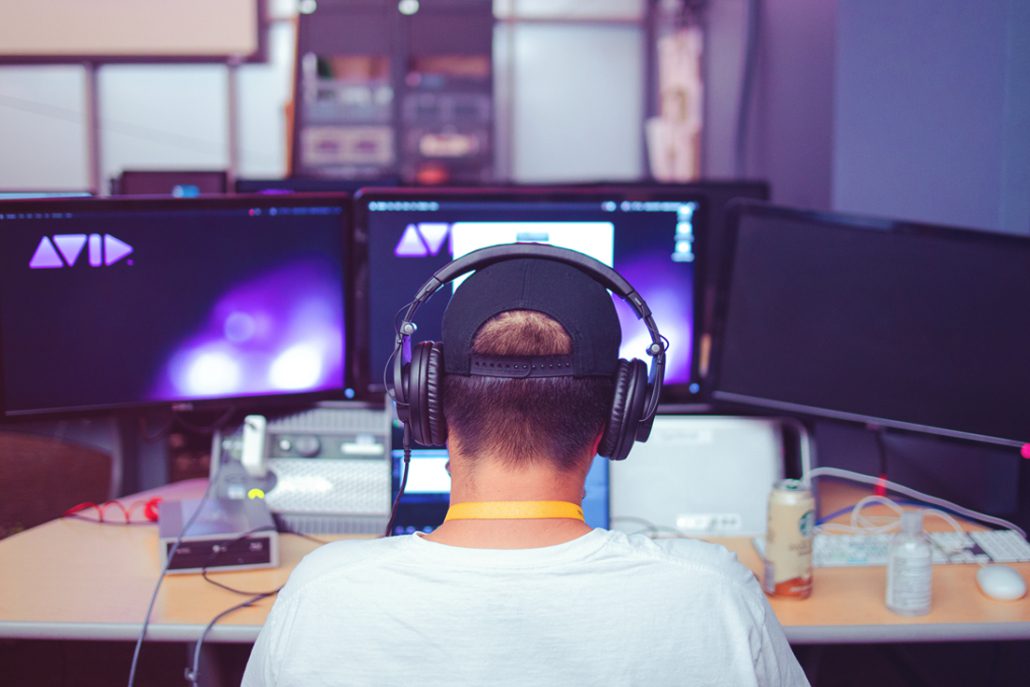What are Binaural Beats and How Can They Help You Focus?

Remember the scene in Back to the Future Part II when Doc Brown uses his sleep-inducing alpha rhythm generator on Marty’s girlfriend? Although this machine is fictionalized for the movie, the concept behind the device is similar to a real-life sound phenomenon called binaural beats. If you haven’t heard of the term binaural beats, you may not be alone. This sound therapy is often used in the scientific study of working memory, focus and creativity. Chances are you have heard these ambient frequencies or sounds at some point in your life without even realizing it.
How Do Binaural Beats Help With Working Memory?
So, how do binaural beats work? Two different sound frequencies are produced to create the perception of a new sound frequency. For example, let’s say a person listens to a sound frequency of 132 Hertz (Hz) in their left ear and then another frequency of 121 Hz in the right ear. The different frequencies in each ear will produce a new “illusionary” sound of 11 Hz as a result.
Studies show that binaural beats increase a person’s working memory by helping the brain organize and retain information that is stored throughout the day for successful reasoning, comprehension and goal-directed behavior. It can help with relieving anxiety and enhancing cognitive focus and creativity.
What Are The 4 Major Brainwave Frequencies?
Beta waves – These brain waves are the fastest frequency of brainwaves (13-40 Hz). They are responsible for focus, concentration and analytical thinking.
Alpha waves – These brain waves trigger relaxed alertness (8-12 Hz)
Theta waves – These brain waves trigger drowsiness or a meditative state (5-7 Hz)
Delta waves – This is when the body is in a deep, restorative sleep (1.5-4 Hz)
Neurons in the brain communicate with each other through pulses of electricity. Binaural beats can trigger a reaction in the brain, causing neurons to prompt different emotions and actions. The alpha state is ideal to help your brain focus and complete necessary memory tasks such as classwork. One study tested the effects of different sound stimulation during working memory tasks. What the study found was that listening to 15Hz binaural beats during a visuospatial working memory task not only increased the response accuracy but also modified the strengths of the cortical networks during the task.*
While most studies show minimal results, binaural beats do have some effects especially related to anxiety, mood and performance.
Tips To Use Binaural Beats For Increased Focus While Studying
1.
To use binaural beats for concentration, you need to listen to a track on low volume. A frequency that presents your brain with a difference of 8Hz-12Hz helps your brain ease into an alpha state of focus.
2.
Instead of listening to binaural beats on your laptop or phone, use headphones to help enhance the experience of listening to the ambient sounds.
3.
Binaural beats follow a certain pattern of sound that slowly develops over time. Resist the urge to skip parts of the track and listen to it from the beginning for the most cognitive benefits.
4.
Only use binaural beats for a small amount of time. This will help you sustain your focus over time and reach the “super alpha learning state.”
*Beauchene C, Abaid N, Moran R, Diana RA, Leonessa A. The Effect of Binaural Beats on Visuospatial Working Memory and Cortical Connectivity. PLoS One. 2016 Nov 28;11(11):e0166630. doi: 10.1371/journal.pone.0166630. PMID: 27893766; PMCID: PMC5125618.
